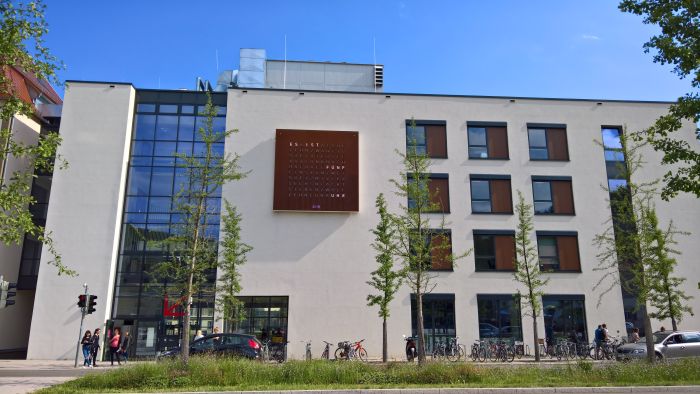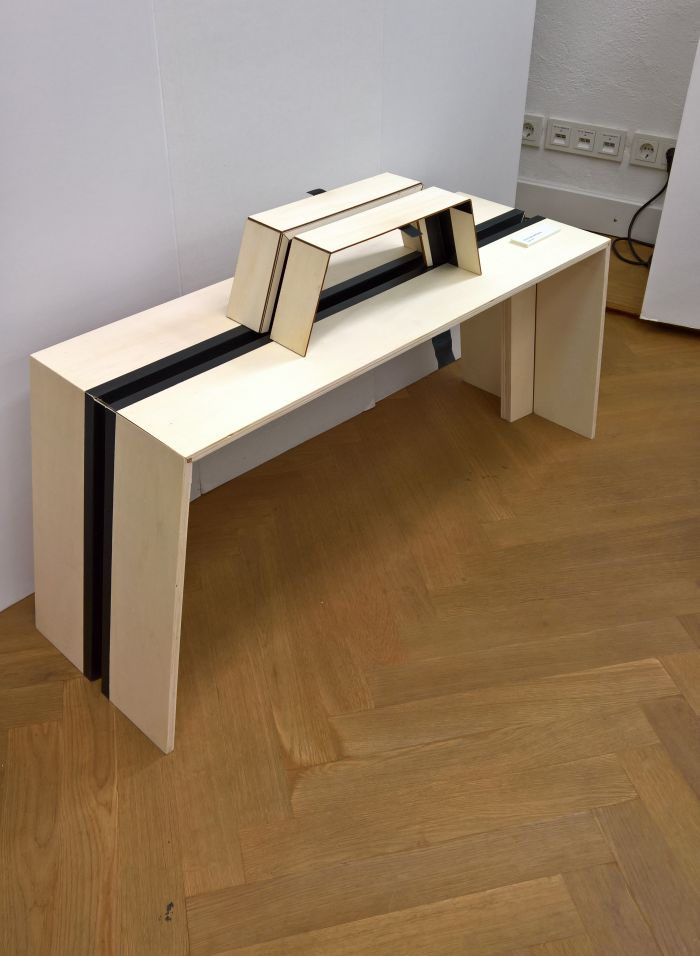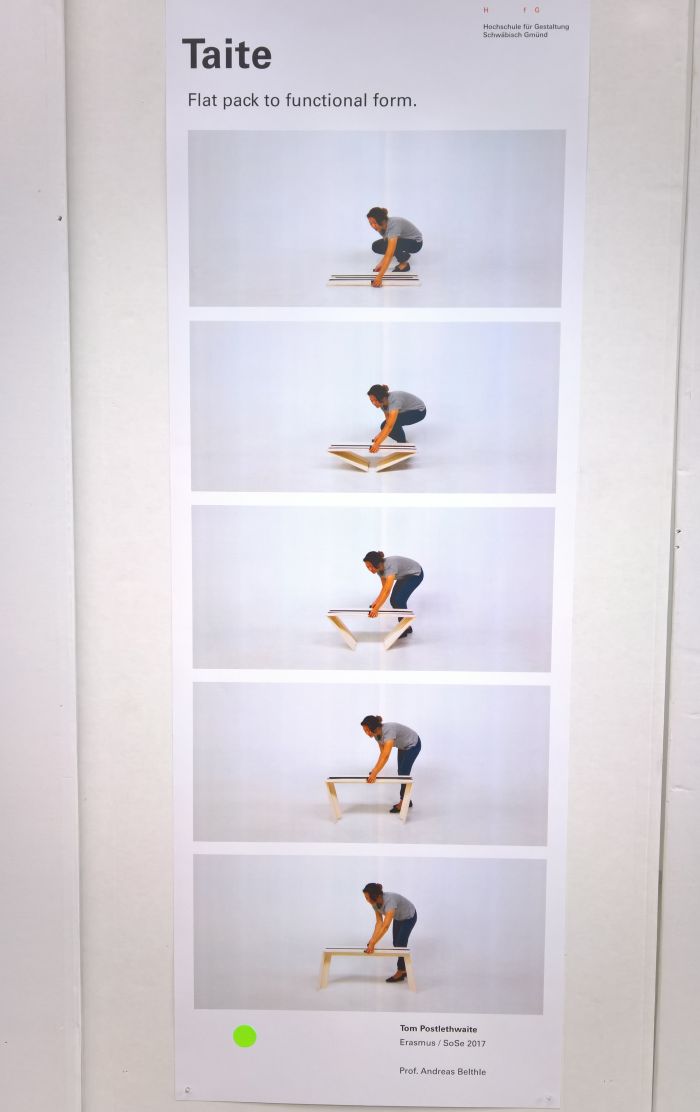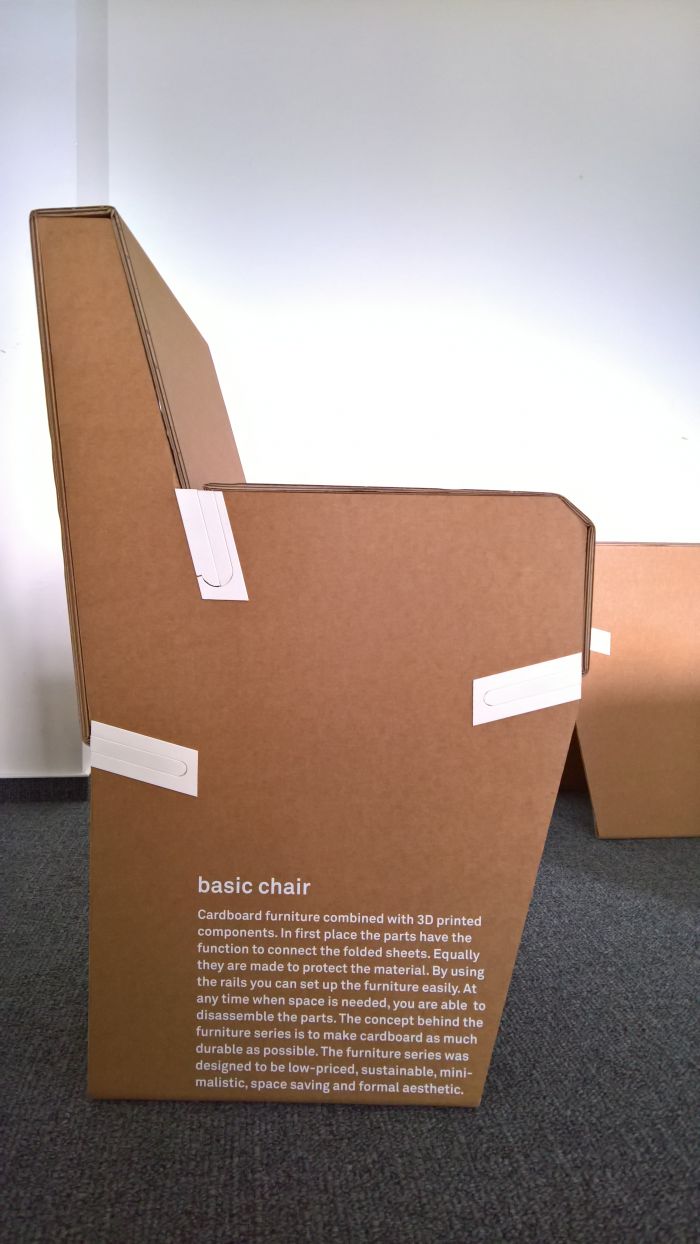#campustour 2017: Rundgang @ Hochschule für Gestaltung Schwäbisch Gmünd, Germany
Somewhat disappointingly the authorities in the southern German town of Schwäbisch Gmünd have succumbed to the current unicorn lunacy and placed one in the town’s coat of arms.
But could the design students at the Hochschule für Gestaltung Schwäbisch Gmünd be relied upon to resist such short term fads?
The 2017 Rundgang summer exhibition provided the answers…….
Hochschule für Gestaltung Schwäbisch Gmünd
The old adage that every end is also a new beginning is neatly exemplified by the Hochschule für Gestaltung, HfG, Schwäbisch Gmünd, for although as an institution it can trace its lineage back to 1776, it owes its current status and identity very much to the demise in 1968 of the Hochschule für Gestaltung Ulm, the post-War Bauhaus revival institution which did so much to establish and propagate the concept of gute Form that defines German design of the 1950s and 60s.
Following the closure of Ulm, not only did many of the teaching staff move the 60kms to Schwäbisch Gmünd, but so did much of the teaching principles, for all the focus on the importance of a thorough grounding in the fundamentals of form giving and design.
To this end, the first three semesters at the HfG Schwäbisch Gmünd are spent in a shared “Foundations of Design” course before the students move on to specialise in Interaction Design, Communication Design, Product Design or Internet of Things – Design of Networked Systems.
The latter posing the very obvious question as to how Gropius, Breuer, Bill, Gugelot et al would have approached such a subject?
How the HfG Schwäbisch Gmünd staff and students approach that subject, and all others, including the Master in Strategic Design, could be viewed at the annual Rundgang summer exhibition.
Hochschule für Gestaltung Schwäbisch Gmünd Rundgang 2017
Staged across the college campus the 2017 HfG Schwäbisch Gmünd Rundgang presented a mix of undergraduate semester projects and the various Master and Bachelor graduation projects.
And thereby an awful lot of apps and digital technology.
It wasn’t only, but you didn’t have to go far to find a project that wouldn’t work without a mobile communication device. Indeed in our field notes we have, “with few exceptions master projects all digital.” Which is arguably an exaggeration. And probably based more on hunger than fact. Although there were a lot. And even amongst the undergraduate projects the message coming from the HfG is very much one of an inevitable integration of digital technology into all and every aspect of our lives. Which arguably shouldn’t come as a surprise in an institution which offers a BA in Internet of Things – Design of Networked Systems
But did kind of.
Not that it is a position exclusive to Schwäbisch Gmünd, rather is one we have oft experienced thus far on our #campustour and fully expect to meet again; but the presence of the Internet of Things bachelor really focussed our attention. At least as far as our attention can be focussed.
For us there are a couple of key points in context of increasing networked digital technology, again we’re not specifically referring to what was on show at the HfG, really aren’t, we’re speaking generally. The first is the, for us, total, unflinching belief amongst those who promote an all invasive digital, networked future, that technology is only good and that it makes perfect sense to digitalise and network every aspect of our lives, to utilise autonomous digital technology as “first choice” for every scenario. It isn’t, doesn’t and we shouldn’t. A lot of it is daft, pointless and a waste of time and money. More often than not the analogue option is every bit as good. If not better. By which we mean yes, walk to your central heating boiler and turn it on/off. Don’t get an “intelligent personal assistant” to do it for you.
And then there is the digital inequality that such will inevitably produce, the creation of a new global class structure based on access to digital networks and digital technology. For not everyone will have the same access, and certainly not the same unqualified, open, unlimited access.
There will be haves and have nots.
Inequality is all-pervasive, inequality is the root of the majority of our current woes, and new technology has the potential to shift it in new directions, to create new forms of inequality, new social divisions, new woes, new ways for the ruling elite to augment their power, and new ways for the corrupt and the criminal to exploit large sections of the population for their own gain.
And is that what we want? Or do we want to make our world a fairer, safer place for all?
Digital technology has without question an important role to play in shaping any future society, but only if it is employed in a meaningful and considered way, and not as matter of course simply because it is possible.
Which brings us neatly back to some old and favoured questions, who is leading the discussion on technological development? Who is leading the discussion on where we want to go as a society? And do we want them leading the discussion?
As we say, we’re not having a dig at HfG Schwäbisch Gmünd or any particular project, although admittedly there was one that did move us to tears of agitated frustration and almost caused us to give up all hope in the future of civil society, but the 2017 Rundgang did provide an awful lot of nutritious food for thought.
Elsewhere……
Taite by Tom Postlethwaite
Created in context of the second year Product Design class Taite by Tom Postlethwaite is a collapsible bench for two which makes elegant use of a very simple construction principle. In effect, Taite transforms from a flat object to a, theoretically, stable bench, the forces placed on the folds providing the rigidity without the need for an additional, mechanical, securing mechanism. Folding flat as it does, and being lightweight as it is/would be/should be, it would appear to offer a nice alternative for locations where regular additional seating is required but storage space is at a premium.
Solarsessel by Colin Gerest
Much as we liked Colin Gerest’s Solarsessel – Solar Chair – project, we are a bit confused as to where he is pitching it. In essence Solarsessel proposes a garden chair that collects and stores solar energy during the day and then, and this is where we get confused, uses the stored energy to heat the chair throughout the evening so that the elderly can stay in the garden longer.
Why the elderly?
We say ignore the elderly, let’s think about the rest of us. A fan? A light for evening reading? A chilled drinks holder in the armrest? If you did have a garden chair with integrated solar power, you could do so much more than provide a place for pensioners to doze on a spring evening….They can doze indoors, we’ve got a mobile communication device that needs charging…….
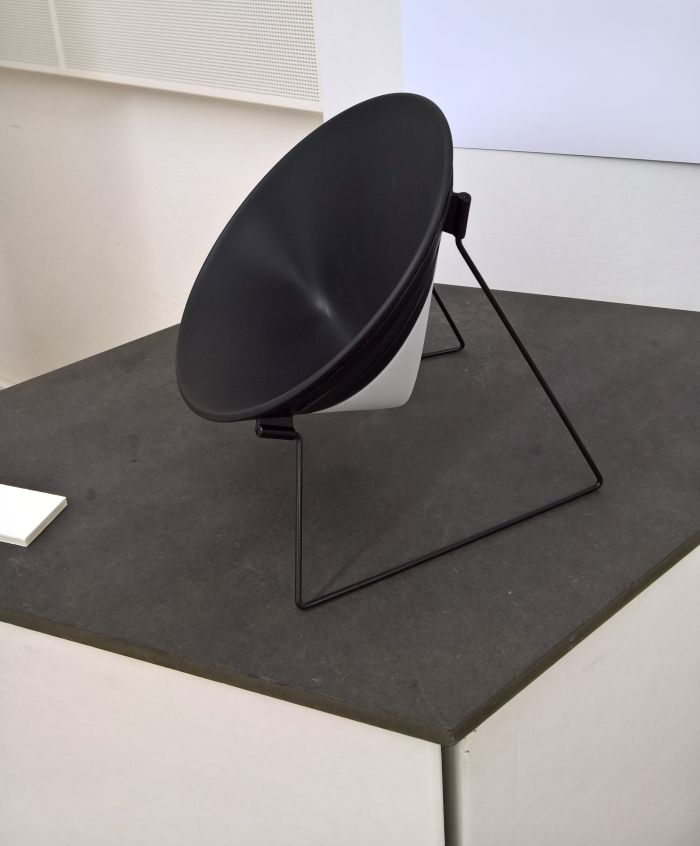
Solarsessel by Colin Gerest, as seen at the Hochschule für Gestaltung Schwäbisch Gmünd Rundgang 2017
Nachtisch 2.0 by Salih Göktekin
As an object Nachtisch 2.0 by Salih Göktekin would be completely lost on us, because we don’t like eating in bed. Or doing jigsaws in bed. Or generally sitting up in bed. But we know a great many people who do enjoy such, and therefore a bedside table, whose top doubles as removable tray table is, in many respects, a dream constellation. Form and material choice don’t particularly appeal to us, but it’s a mock up of a student project, when fully developed we are certain it will shine with a grace all of its own.
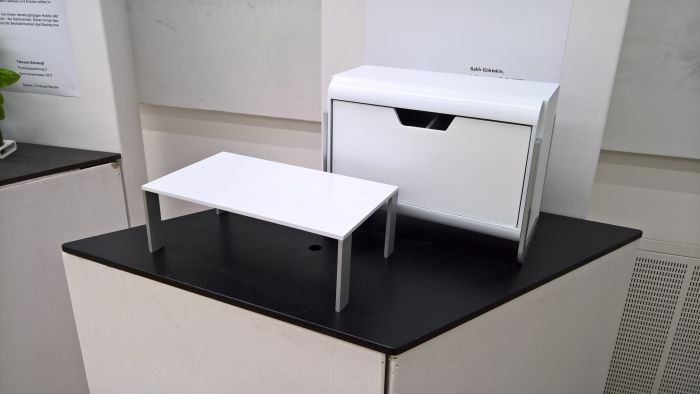
Nachtisch 2.0 by Salih Göktekin, as seen at the Hochschule für Gestaltung Schwäbisch Gmünd Rundgang 2017
Charles by Nicole Clarita Häring
We know of several chairs which double as “valets”, all, in effect, start from the position: “You’re going to take off your jumper and throw it over the chair, and so why not do it properly?”
Which is also the starting point for Charles.
What we particularly like about the project, aside from the neatly bent steel tube backrest that provides the hanging space for jumpers, trousers, belts, jute bags etc…. is the elongated backrest. We’re fairly certain it arose from the banal necessity of creating a sensible amount of storage space on the back, but for us it is the defining feature of the piece. It may because we’re getting old, but police officers are definitely getting younger, summers are getting wetter and chair backrests are getting shorter: in contrast Charles has something of the old wooden armchair of centuries gone. Almost regal, certainly petite noblesse, albeit in pleasingly slim, reduced, contemporary and stubbornly uncarved object.
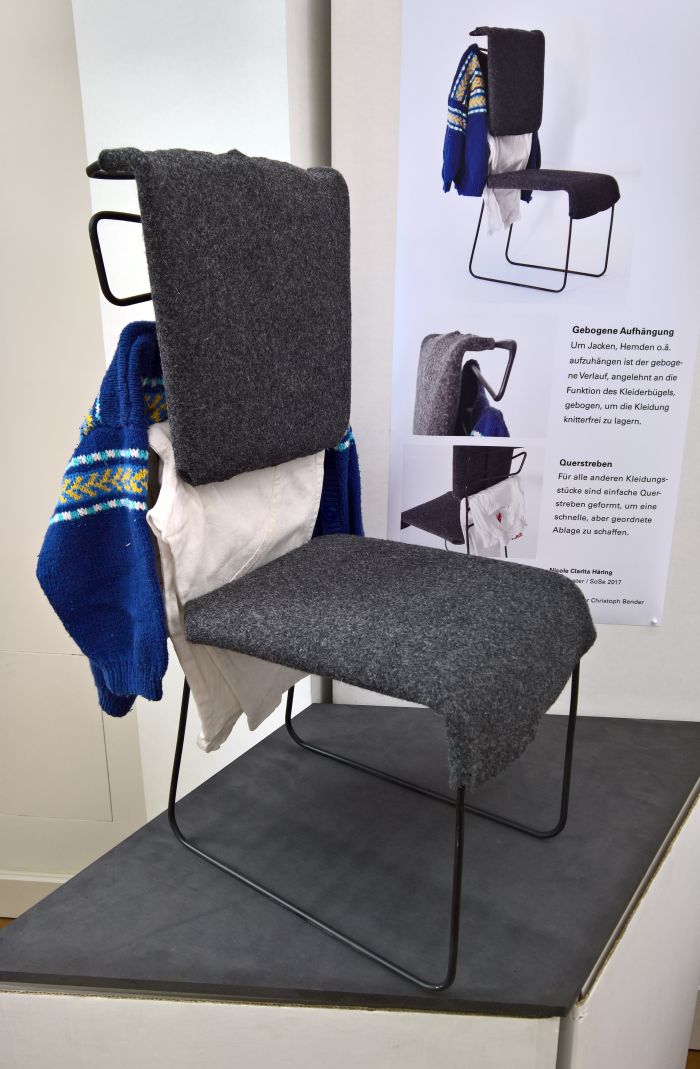
Charles by Nicole Clarita Häring, as seen at the Hochschule für Gestaltung Schwäbisch Gmünd Rundgang 2017
Vom Stuhl zur Bank by Sara Fileppi & Fabio Maximilian Wolf
While we rarely find a good word for furniture objects which can be transformed from one type into another, arguing that users never will, Vom Stuhl zur Bank – From Chair to Bench – by Sara Fileppi & Fabio Maximilian Wolf has all the makings of being a very nice exception. Devised in context of the first semester class Steckverbindungen – Inserted Connection – the project proposes a seat backrest that can be used to extend a single chair into a three seater bench.
For us as a concept it would appear particularly well adapted to office environments where meeting rooms need to host gatherings of differing sizes, but you don’t want to have it filled with chairs and/or benches all the time. Or public spaces where waiting is normal, but numbers of waiters difficult to asses, so hospital, airport, court, etc, etc, etc..
Don’t ask us what material you would have to use, there a lot of unresolved stability and static issues there, but as a concept is very satisfying and one we hope Sara and Fabio get a chance to at least try to develop.
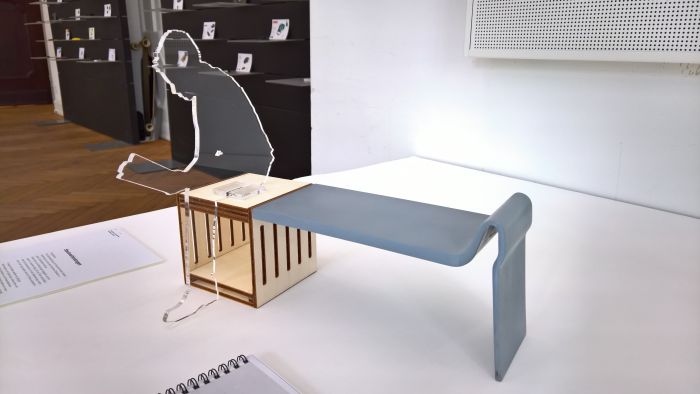
Vom Stuhl zur Bank by Sara Fileppi & Fabio Maximilian Wolf, as seen at the Hochschule für Gestaltung Schwäbisch Gmünd Rundgang 2017
re.ex Daniel Benedix, Maurizio Blöscher & Manfred Löprich
Hands up who knows how to use a fire extinguisher?
Now keep your hand up if you really know how to use a fire extinguisher, and aren’t just of the opinion “it can’t be that difficult”
And see, hardly anyone actually knows how to use a fire extinguisher.
Which isn’t a great state of affairs.
re.ex by Daniel Benedix, Maurizio Blöscher & Manfred Löprich is an attempt to rectify that situation. Created in context of the fourth semester ergonomics class, re.ex is intended as a fire extinguisher for home use, and thus is, logically and ingeniously, based on familiar household objects: older readers will remember the soda syphon of yore, younger readers, cream dispensers/whippers. And thus is an object which most of us could/should be able to use without training, or indeed too much thought. Important as that is when your kitchen is on fire. And which is surely what a well designed product should allow for.
Formally very pleasing, materially sound, functionally logical, works without an app, we’re not seeing which box it doesn’t tick…….
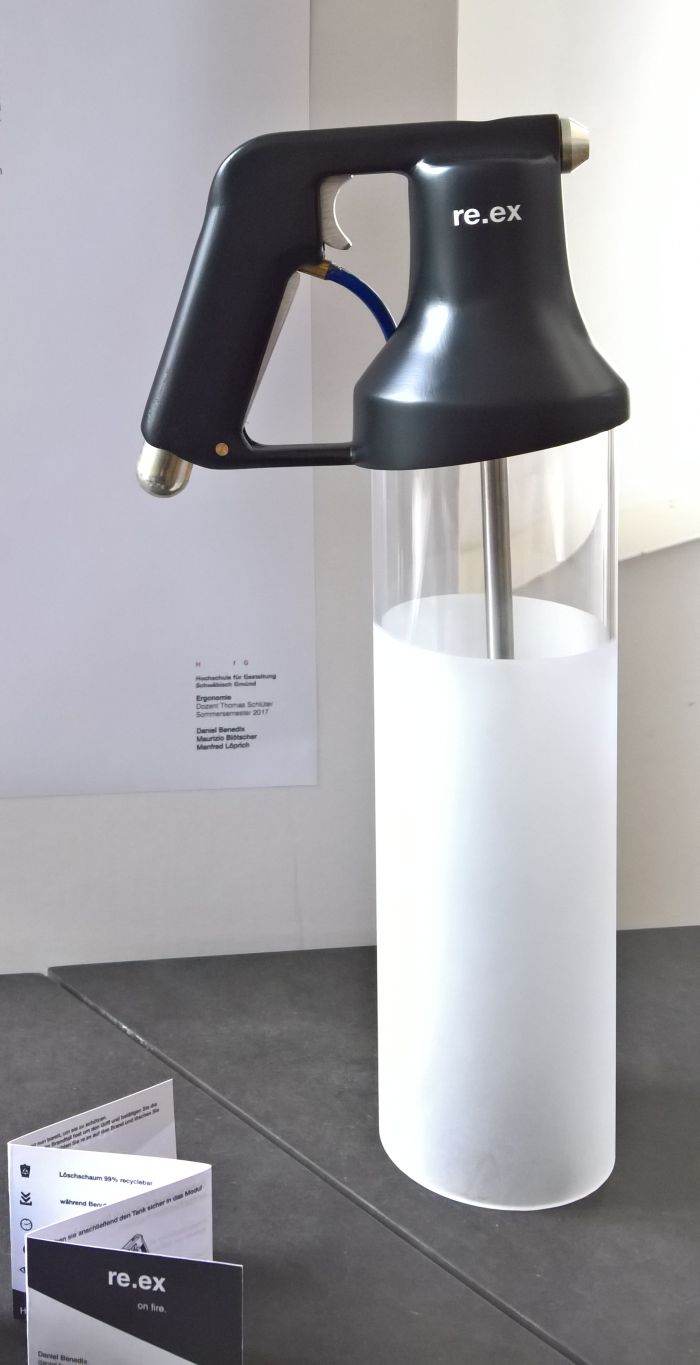
re.ex by Daniel Benedix, Maurizio Blöscher & Manfred Löprich, as seen at the Hochschule für Gestaltung Schwäbisch Gmünd Rundgang 2017
Furniture Series by Clemens Schneider
Despite the fairly unequivocal name Clemens Schneider’s Bachelor project isn’t a furniture series. But could be. For what Clemens has developed is a 3D printed connector which allows for the construction of cardboard furniture.
Now yes, you could build cardboard furniture without a 3D printed plastic connector. You could. We couldn’t. We don’t have the technical skills. However with a 3D printed plastic connector even we could.
Clemens’ connector isn’t the first 3D printed connector that allows for the creation of various furniture objects, is for us interesting as it allows such with cardboard, with all the advantages that has, not least in situations where furniture is needed quickly, yet only for a short period, whereby emergency accommodation would be the most obvious example. The necessary cardboard can be shipped it flat at low cost, the connectors locally printed and when the need recedes the cardboard recycled or otherwise meaningfully re-appropriated.
In addition, for us such a solution is how open source and rapid processing technology needs to develop: the creation of simple objects which allow the end user a maximum of flexibility with a minimum of technical complexity.
Full details on the Hochschule für Gestaltung Schwäbisch Gmünd can be found at: www.hfg-gmuend.de and a selection of the graduation projects at www.hfg-gmuend.de/Abschlussarbeiten.html (German only)
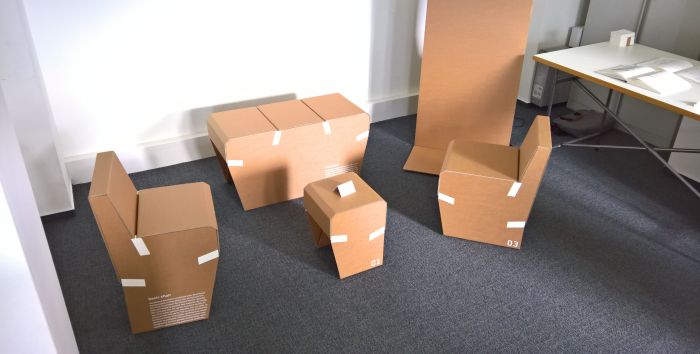
Furniture Series by Clemens Schneider, as seen at the Hochschule für Gestaltung Schwäbisch Gmünd Rundgang 2017
Tagged with: #campustour, Hochschule für Gestaltung Schwäbisch Gmünd, Schwäbisch Gmünd

